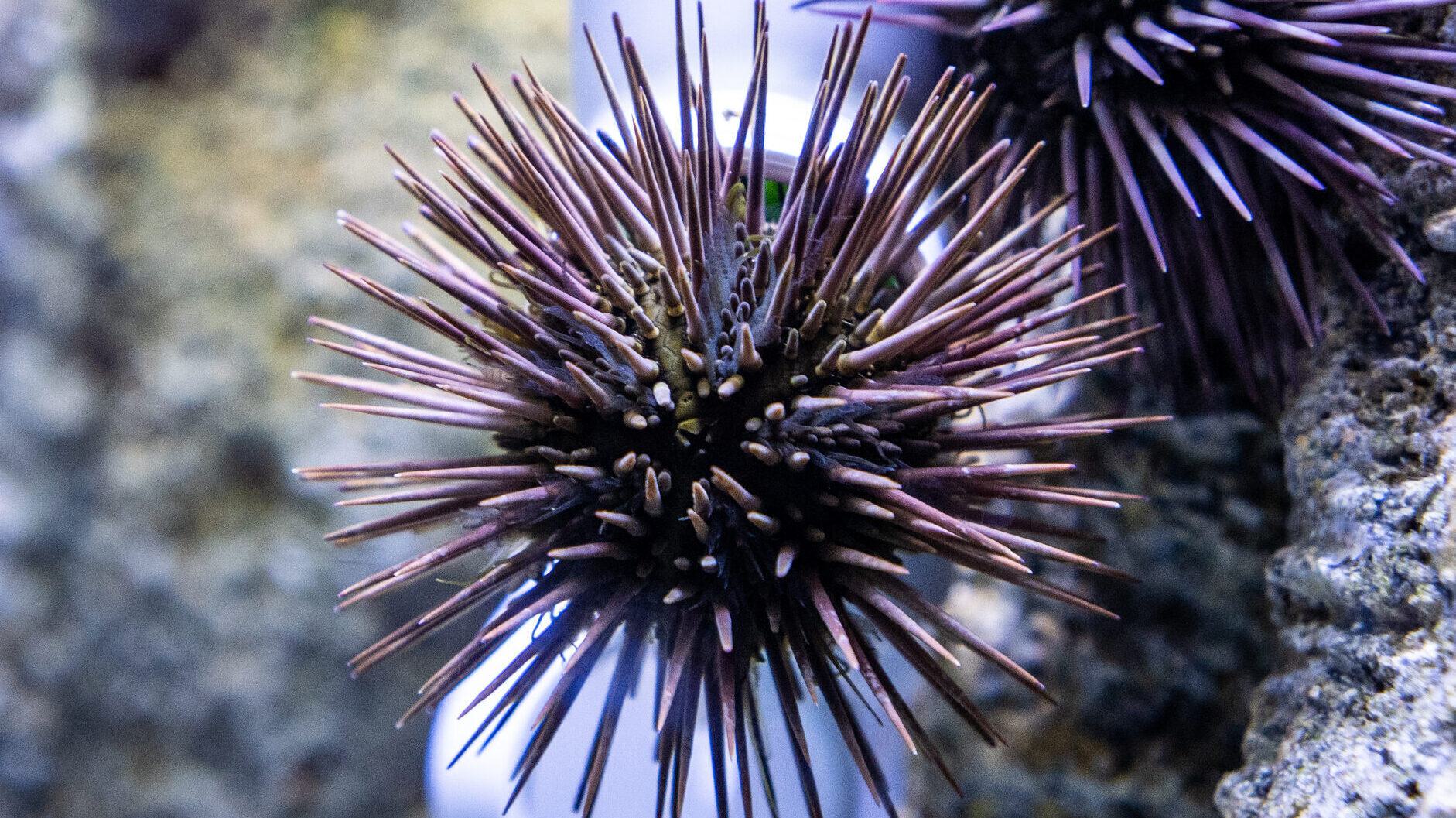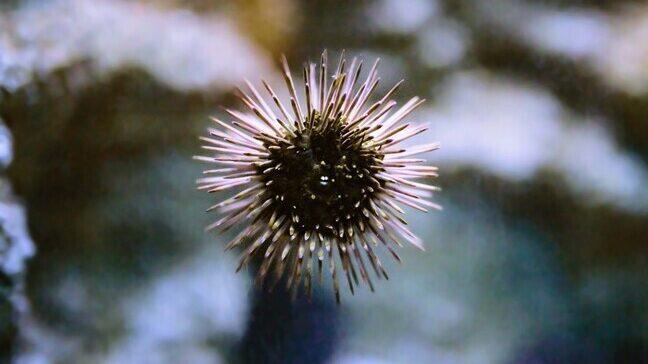Species Name: Arbacia punctulata
Residing along the seafloor, rock ledges, and coral reefs, the Atlantic purple sea urchin (AKA purple-spined sea urchin) is an important indicator species, alerting us to the health of water conditions.

Species Name: Arbacia punctulata
Residing along the seafloor, rock ledges, and coral reefs, the Atlantic purple sea urchin (AKA purple-spined sea urchin) is an important indicator species, alerting us to the health of water conditions.
Unknown; possibly 100 years or more.
Primarily herbivorous (e.g. algae).
Rock or shell substrates in saltwater.
Western Atlantic Ocean coasts of the United States and the Gulf of Mexico.
Length: Approximately 4 inches
The body is covered in a spiny exoskeleton, or "test," made of fuse plates that act as protection for the internal organs, but also join the tube feet in providing locomotion. Juveniles of this urchin species are bilateral, but as mature adults are radially symmetrical, like a spherical pincushion. Urchins have no eyes or ears, and while an urchin's mouth is on the underside of its body to allow it to forage on the seafloor, the anus is located on top of the body.
Diet
Sea urchins feed on algae and are primarily herbivorous. They also feed on other small organisms using a specialized organ called Aristotle’s lantern. This mouth feature is made of five hard plates that move together like a beak, which they use to scrape algae off of rocks. While eating can cause wear and tear, the plates can regenerate.
Habitat
This urchin is found along the US Atlantic coastline and the Gulf of Mexico on rocky reefs or shell-covered sea floors, and can be found anywhere from the low-tide line to water depths of 750 feet. They find shelter in rock crevices and under shells and have also been observed carving rock nooks in which to hide.
Locomotion
Purple sea urchins move using their spines but also "tube feet," which are actually part of their vascular systems and act as a hydraulic mechanism. By creating a small suction at the end of these feet, they can pull water through an opening called a madreporite, then push water into the tubes, causing the tubes to extend. When the muscle relaxes, the water is expelled and the feet shorten. Both spines and tube feet can break, but like other echinoderms, urchins commonly regenerate them.
Relationship with Other Species
The purple sea urchin has a symbiotic relationship with small grooming organisms that live between their spines. Initially, these organisms were theorized to be parasites, but it was later discovered that they support sea urchin health by keeping the surface free from other potentially harmful plant or animal organisms.
Concerns
Urchin eggs are harvested for consumption among some cultures, though the most significant concern for this species is pollution.
Celebrations
Sea urchin species such as this one have thrived globally for centuries, and face few threats.

North Building Urchins
Our urchins can be found in our North Building in the Cold Water Gallery (between Sharks and Sea Turtles, under the whale replica) as well as in our Chesapeake Bay Touch Pool!
Not Evaluated (NE)
A taxon is Not Evaluated (NE) when it has not yet been evaluated against the criteria. Not Evaluated (NE) species are not published on the IUCN Red List.
IUCN Red List